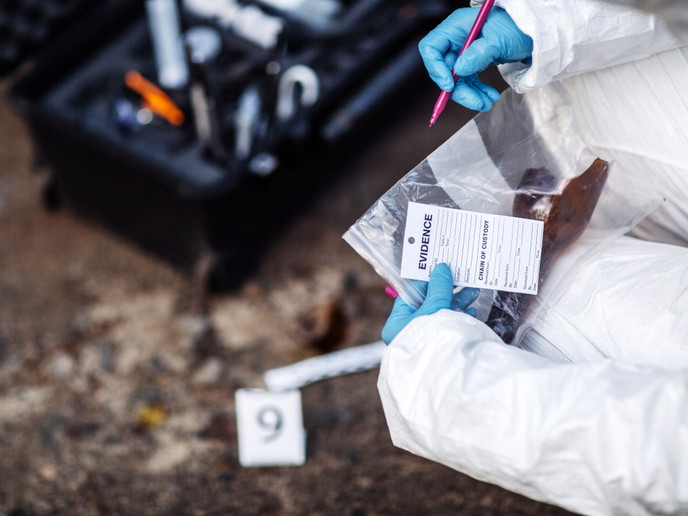Spray-on reagent helps convict sex offenders
Crime scene investigation (CSI) technology must provide, fast, accurate, non-destructive detection of a wide range of evidence, including invisible stains caused by bodily fluids. Particularly important is the ability to identify semen stains for evidence from sexual assault cases, as it is likely to contain samples of the assailant’s DNA. The EU-funded Sex-Assault-ID(opens in new window) project addressed this need by developing a sperm identification test to gain evidence of sexual assault via DNA detection and collection. The test involves a biochemical reagent for semen stain mapping that will be part of the crime scene technician’s (CST) tool box. An ultra-specific molecule that only reacts with enzymes contained in human semen forms the basis of the technology. “It works because of the combination of the enzyme targeted, and the molecule chosen is extremely robust against external conditions like dryness and temperature,” says project coordinator Dr Benjamin Corgier. Improved results The reagent comes in the form of a dissolvable powder, which produces a ready to use sprayable solution. After spraying the solution over suspected materials like carpets, sofa, bedding or car seats, a portable ultraviolet light can reveal the presence of semen within a minute. Stains can then be sampled by the CST and sent for DNA profiling. “Key results were the first positives tests on material where sperm stains have never been so specifically identified by other screening techniques, like on grass, stone and car interiors made of plastic,” Dr Corgier explains. The main challenge faced by Sex-Assault-ID involved transferring the concept from the laboratory to the market place. They had to provide a dry stable powder that enables the specific detection of prostatic acid phosphatase contained in semen. In addition, it must not affect DNA and sampling, while complying with the routine production. International interest Researchers tested and validated the spray formulation for the detection of semen in the laboratory and found it to be compatible with DNA sampling and profiling. A business plan has also been drawn up to address customers in Europe, North America and the rest of the world, and critical suppliers identified. Lastly, a cost, pricing and profitability model has also been evaluated. Interest in the product has already been expressed by a wide variety of countries including China, France, Germany, Japan, New Zealand, Sweden, United Kingdom, and USA. Sex-Assault-ID successfully developed a stable, simple to use reagent in spray form that will benefit users by replacing the previous toxic products and reducing screening time. The judiciary system and the wider society will also benefit from an improvement of over 50 % in accuracy as well as frequency of DNA collection in sex assault cases. Furthermore, the Sex-Assault-ID solution will help solve cases more efficiently and bring assailants to justice more quickly before they can offend again, thereby reducing the rate of sexual assault. “The systematic use of the spray will improve collection, the investigation, and the judiciary system, saving direct and indirect costs for every stakeholder,” Dr Corgier concludes.







